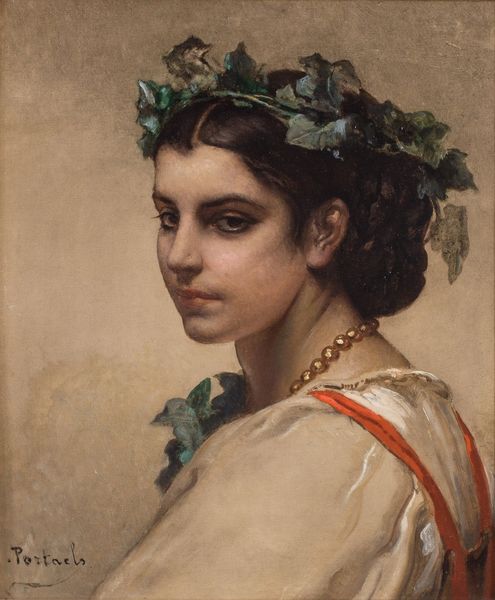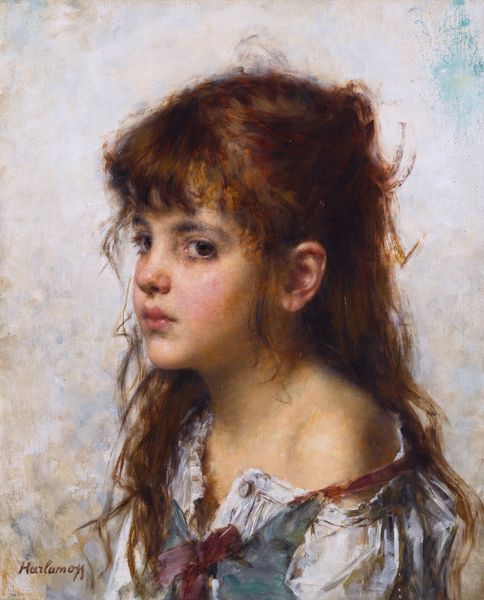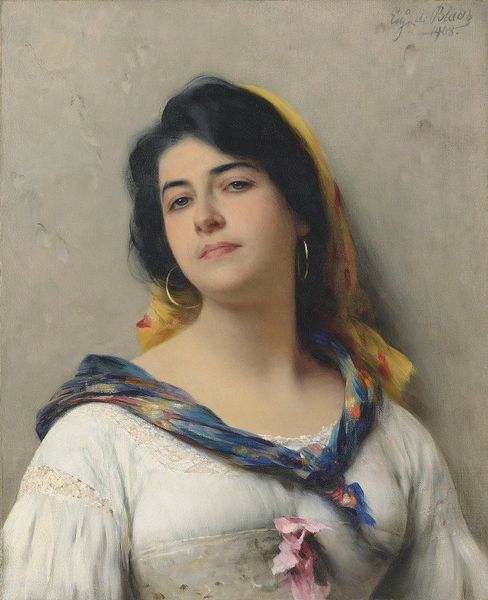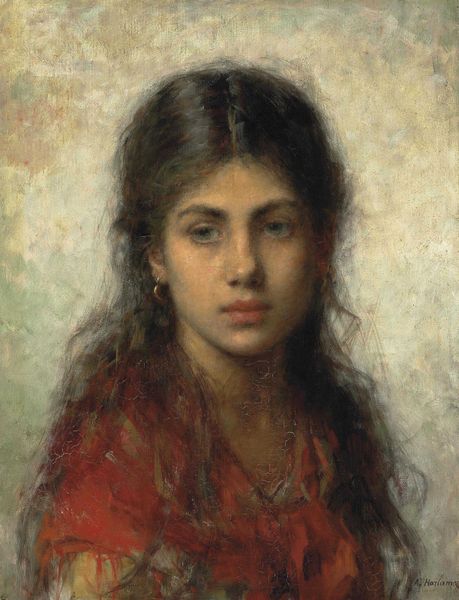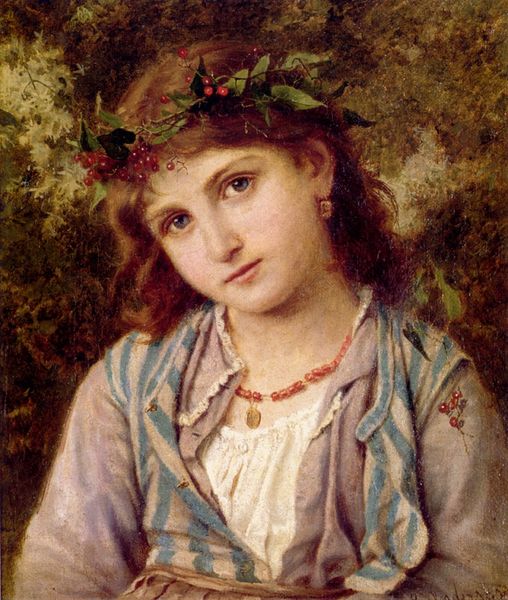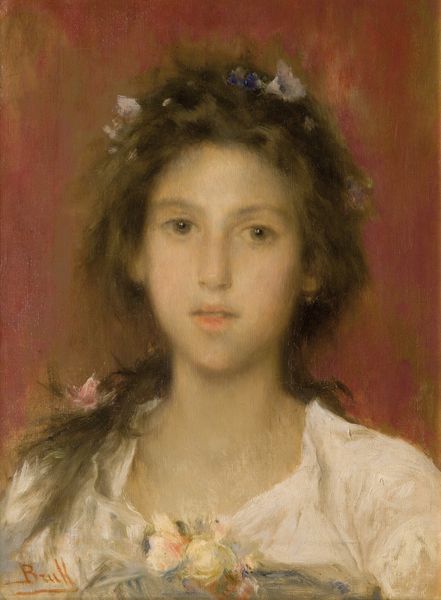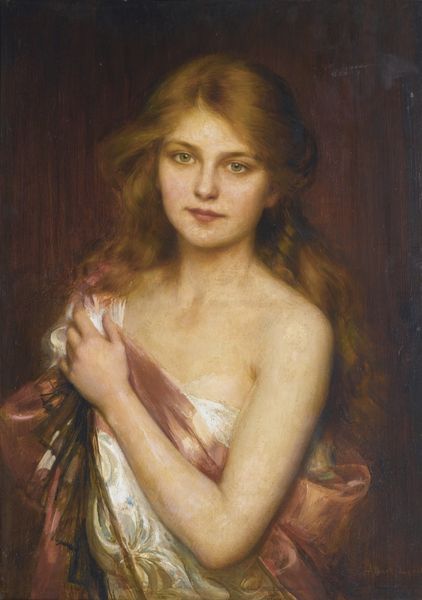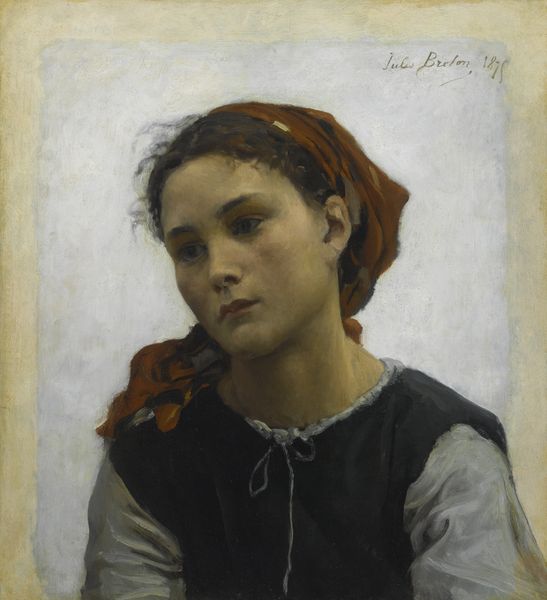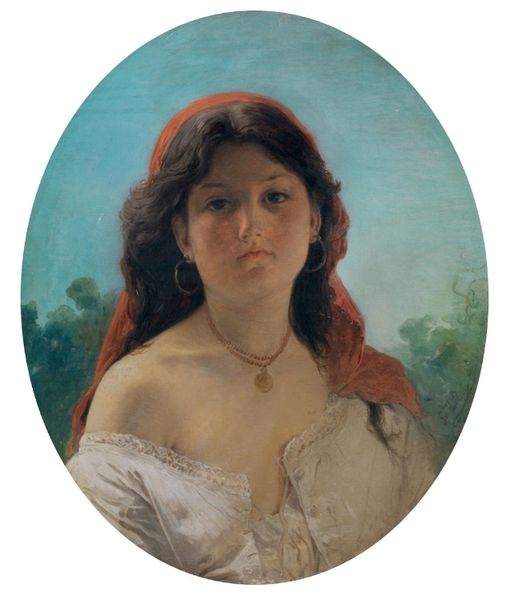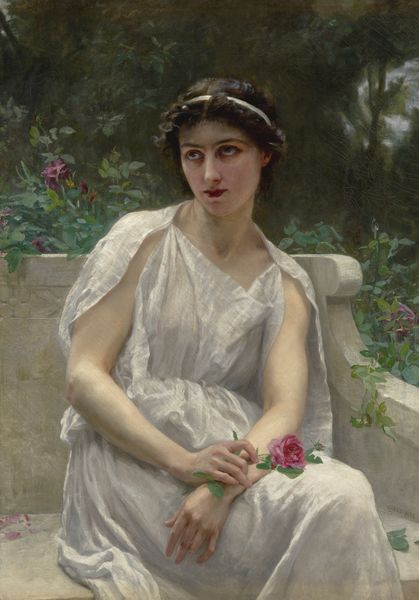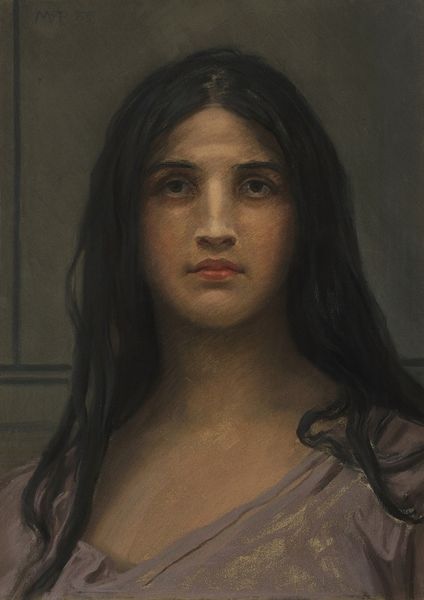
Copyright: Public Domain: Artvee
William Bouguereau painted "Jeune fille couronnée de pampres" during the late 19th century, a period marked by significant social and cultural shifts in France. During this time, academic art, with its emphasis on realism and idealized beauty, reigned supreme. Bouguereau, a prominent figure in this movement, often portrayed women in a manner that blended classical aesthetics with a touch of sentimentalism. This painting, whose title translates to "Young Girl Crowned with Vine Leaves," embodies these qualities. The subject, adorned with vine leaves, evokes a sense of pastoral innocence and purity, aligning with the era's romanticized view of women. Yet, this image also participates in constructing the female subject, reflecting the limited roles and expectations imposed on women during the time. Bouguereau's work, while celebrated for its technical skill, invites us to reflect on the complex interplay between artistic expression and social norms, reminding us that even the most beautiful images can reflect cultural biases and power dynamics.
Comments
No comments
Be the first to comment and join the conversation on the ultimate creative platform.
